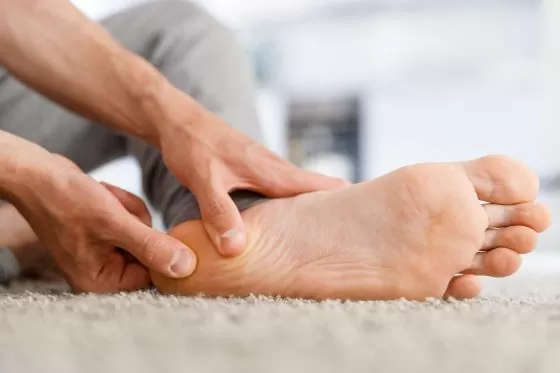What is plantar fasciitis?
The plantar fascia is a band of tough fibre on the bottom of your foot. It runs from your toes to your heel and forms the arch of your foot. Plantar fasciitis is an acute painful condition that happens when the plantar fascia tissue gets injured and inflamed. This makes your heel hurt when you walk. The pain is usually worse when you get out of bed in the morning or when you walk after sitting for a long time. Walking barefoot, running, or walking upstairs may make the pain worse. Plantar fasciopathy is the name of the condition when is becomes more chronic. This is due to the fact the inflammation (itis) is no longer present, but the ligament tissue has broken down causing longer term chronic painful symptoms, very similar to the ones found in the acute stage. Plantar fasciitis can be a pesky condition, with symptoms lasting from anything between a few week to 12 months.
Who gets plantar fasciitis?
About 1 in 10 people will have this problem at some point. People who spend most of the day on their feet, who are overweight, or who cannot move their feet and ankles well are more likely to get plantar fasciitis. Unfortunately, runners are one of the most at risk groups. Plantar Fasciitis is 1 of the top 5 injuries runners experience, accounting for around 10% in all running related injuries. With 65-80% of runners getting injured each year It’s an ever-increasing problem that many runners now know too well.
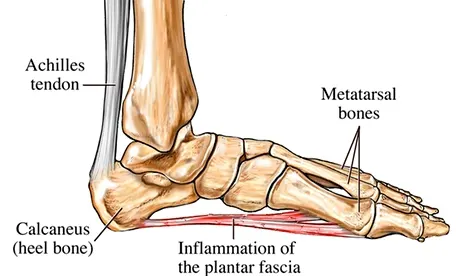
How do I know if I have it?
It’s common to have plantar pain on the bottom of the foot by the heel. However, the pain can also be experienced further up the forefoot. The pain can ease with movement, but the first few steps after getting up can be very painful. A Sports Therapist can fully assess for this condition. This is done by asking questions about your lifestyle and any previous injuries, before performing a full physical assessment of the foot. A Sports Therapist will also be very keen to assess how you move elsewhere, so in many cases will look at you hip, knee and toe movements also.
What should I do if I have it?
Generally, it’s best to avoid any activity that is making the condition worse. With that being said, it’s not recommended to just rest it out and do nothing. Many years ago, rest was the advised approach to a lot of musculoskeletal conditions, but thankfully we’ve come a long way since then. Schwartz EN, Su J. Plantar fasciitis: a concise review. Perm J. 2014 found that In all of the literature reviewed, plantar fascia-specific stretching had the best statistically significant long-term results. The figures show some of the most widely used and evidence-supported stretches that patients can do at home.
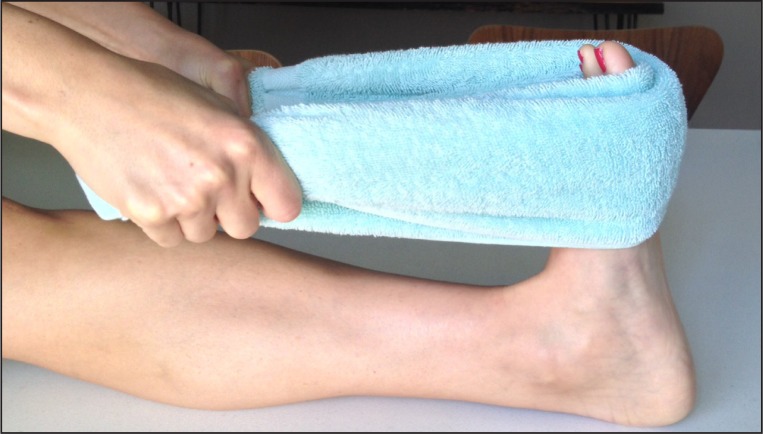
Towel assisted calf and arch stretch. This can be kept by the bedside to perform before going to bed and getting up before them first few steps in the morning – Pull back to a moderate stretch on the foot for 30 seconds x 3 with a 30 second rest in between.
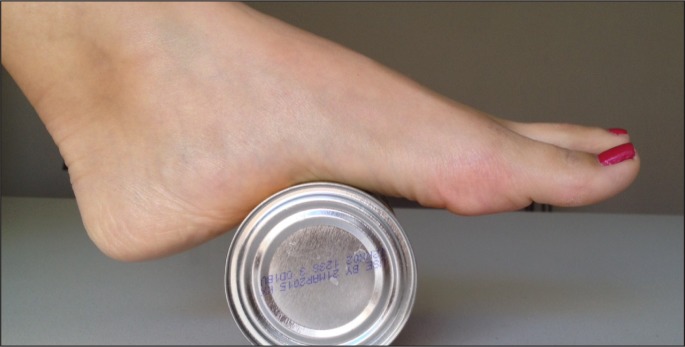
Roll a can or a ball along the plantar. It is advisable to keep this at your bedside and perform before going to sleep and before taking your first few steps in the morning – Roll the plantar facia for 1 minute x 3 with a 30 second rest in between.
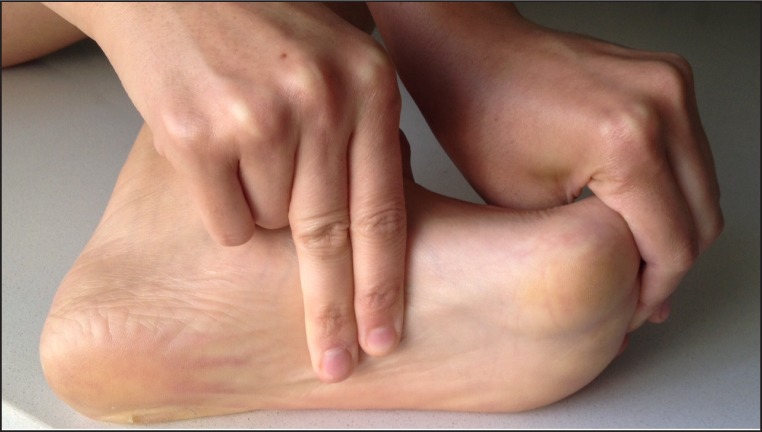
Manual plantar facia stretch along with cross-friction massage is also a highly recommended evidence-based home treatment. Stretch and massage the area lustrated in the figure before taking your first morning steps for 1 minute x 3 with a 30 second rest in between.
Working with a Sports Therapist can also be beneficial. This is due to the fact that a full physical assessment can be performed, and an individualised treatment plan can be agreed. The treatment plan may include things like, soft tissue therapy, joint mobilisation and an exercise prescription to address any muscle imbalances or undesirable movement patterns. The exercise prescription would be tailored in a way to optimally load the tissue to stress it enough to cause adaptations, but not too much to cause re-injury.
What can I do to prevent it?
If you want to become more active, don’t do too much at once. Build up gradually as it is well understood that cardiovascular fitness can improve quicker than the physiological adaptations of soft tissue, which is vulnerable to injury. It’s very easy to push yourself that little bit too hard to soon with either increasing pace too quickly, running longer or suddenly changing your running surface from the treadmill to road, or road to trail.
These examples have been found to be the common causes of increased risks to running injury. You should wear appropriate footwear for the activity you are participating in. It is highly recommended for runners to get good quality fitted trainers from a reputable running shop equipped with the facility to analyse your running gait and advise on the best trainers for your needs. Consider working with a professional running coach or trainer, who can support you with a bespoke training plan tailored to your ability.

